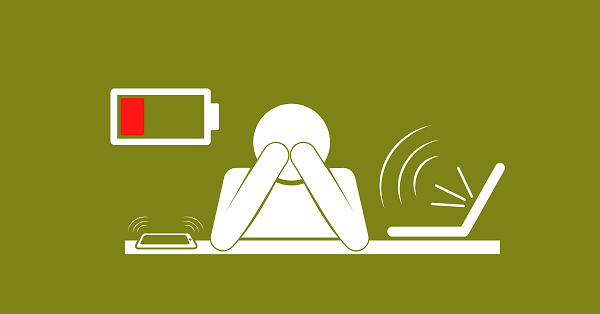Physician stress and burnout have negatively impacted the healthcare industry for years and worsened with the onset of the COVID-19 pandemic. In April of 2021, Kaiser Family Foundation released a survey of 1,327 frontline healthcare workers. A staggering 55 percent of respondents reported experiencing burnout. Healthcare workers between the ages of 18 and 29 reported the highest burnout rate at 70 percent.
Utilizing a platform that has the ability to simplify credentialing and save time and resources will allow the physicians at your location of care to focus on what matters most - the patient. This is possible while also lessening the organizational struggles that can lead to a stressful work environment.
Knowing how to prevent physician burnout should be a concern for all locations of care, but it is one that IntelliCentrics can help ease. Health information technology, data analysis, and staff support are all needed to identify and prevent burnout among medical staff.
What is Physician Burnout and How to Beat It?
Burnout is a set of symptoms associated with chronic workplace stress. While burnout is a problem in many industries, it is especially prevalent in the healthcare sector and can have far-reaching consequences. In addition to its impact on personal mental and physical health, healthcare worker burnout worsens staff performance and patient safety. A burned-out staff member is more likely to make medical errors. The mental effects of burnout can also result in diminished perceptions of safety culture.
Signs of physician burnout include the following:
- Changes in appetite
- Changes in sleep patterns
- Feeling drained or exhausted
- Feeling helpless or trapped
- Feelings of negativity or cynicism related to work
- Frequent headaches, stomachaches or muscle pain
- Increased risk of alcohol or other substance abuse
- Increase in sick days, showing up late for work, or leaving early
- Loss of motivation
- Low levels of job satisfaction and sense of accomplishment
- Mentally distancing oneself from one’s job
- Reduced professional efficiency
5 Ways to Beat Physician Burnout
How do locations of care prevent physician burnout? A multifaceted approach is most effective:
1. Invest in research and leadership development
Research into physician stress is crucial if we are to understand the cause of burnout. For individual locations of care, this means gathering and analyzing data related to burnout, using that data to establish solutions, and gathering information from the latest national burnout research.
Such data is best gathered with the buy-in of healthcare workers and their supervisors, who must take a leadership role in combating burnout. Quality of leadership can positively impact burnout rates. The Mayo Clinic reports a one-point increase in a physician’s immediate supervisors’ leadership score results in a 3.3 percent decrease in burnout rates.
2. Improving Workplace Environments
Positive workplace environments foster well-being, which helps prevent burnout. Locations of care should prioritize procedures and policies which deliver the best value to staff and patients. This prioritization should factor in the insight and recommendations of staff members.
3. Reduce Administrative Chores
No one becomes a physician because they love paperwork and bureaucracy, but the administrative work associated with healthcare is incredibly high. Physicians deal with local, state, and federal healthcare laws, standards, and regulations every day, and non-clinical administrative burdens are a significant cause of physician stress and burnout. Automated compliance and report generation reduce non-clinical tasks, allowing healthcare workers more time to focus on aspects of their jobs that provide the most satisfaction.
4. Professional Development
Professional development is vital to continued excellence in clinical care and improves healthcare workers’ confidence and abilities. Promoting well-being and addressing burnout through ongoing education helps maintain a healthy workforce.
5. Ongoing Support
As with mental illness, the stigma attached to healthcare worker burnout often prevents staff from seeking help. Fears of being blamed for burnout or seen as weak or incapable are common. Physicians may worry how admitting to burnout will affect their standing with licensure boards and health care organizations.
Locations of care should take active steps to reduce such stigmatizing attitudes. Peer support programs, team meetings, and self-care training all encourage staff to talk about burnout. While helpful, such programs are not enough by themselves to prevent physical burnout — they must be offered alongside organization-level policy changes designed to reduce stress and improve working conditions.
Using Healthcare Compliance Technology to Achieve Your Goals
Locations of care need to understand how to prevent physician burnout to retain staff and maintain the highest quality of care. At present, one of the most significant causes of healthcare stress lies in the administrative burden, such as credentialing and onboarding qualified physicians.
Traditionally a lengthy and convoluted process, physician credentialing has become even more critical as locations of care work to ensure everyone involved in patient care meets regulatory policies regarding COVID-19. Switching from a paper-based compliance process to a cloud-based healthcare provider credentialing solution - the SEC³URE Ethos technology platform by IntelliCentrics - can reduce stress and anxiety among physicians while freeing up their time to focus on the quality of care. The platform is offered to locations of care at no cost, which means improved patient care and outcomes at a much lower cost - a win for physicians, the locations they serve, and ultimately patients.




